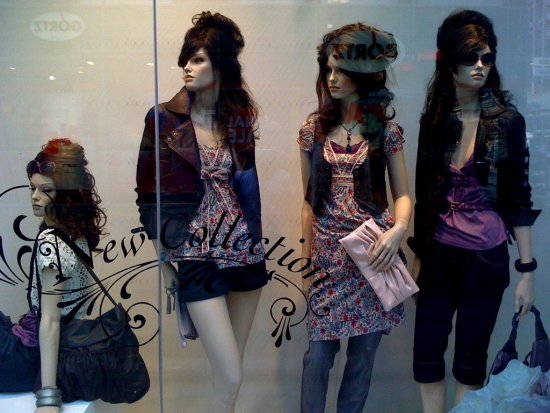Thanks to a dip in consumer confidence, the retail industry is keen to develop techniques which will entice customers to spend freely when entering a store. This has led to pre-Christmas sales, loss-making initiatives and mass promotions becoming common sights on high streets across the country; however, there have not been any indications that these methods have had any dramatic impact as sales have so far failed to climb significantly.

Do standard mannequins deter shoppers of different sizes, shapes and builds?
However, a debate triggered by a Swedish department store has given British retailers cause to reconsider their current marketing techniques – what if it is body confidence, rather than consumer confidence, which is the crux of the spending drought.
In the UK industry standards generally mean that 5 foot 10 inch shop mannequins display clothes in sizes 8-10 only, with consumers filling larger sizes expected to try on items in order to gain a realistic expectation of the fit.
However, Åhléns – the Swedish equivalent of John Lewis – has pioneered the use of mannequins which stand 5 feet 7 inches tall and wear a size 12, which they believe “encourages a positive body image” according to spokesperson Monica Hultgren.
“Normal” sized mannequins can be found in all 75 Åhléns department stores and the initiative has proven immensely popular since airing on social media sites, with the chain claiming a picture of a lingerie display gained over 1 million likes and shares.
Mary George, spokesperson for eating disorders charity B-eat, praised Åhléns for going against the grain with a diverse range of mannequins.
She said; “B-eat has long campaigned for the fashion industry to reflect the diversity of shapes and sizes of mankind and we welcome any initiative that embraces this.
“What we need is a mixture of different heights and widths of mannequins in our shops to reflect the reality of peoples’ different shapes, sizes and build.”
As yet, no UK store has revealed plans to emulate the idea, although Debenhams did trial size 16 mannequins with an extremely positive reaction several years ago. Fellow Swedish brand H&M has also hinted at a potential future experiment with larger sized mannequins.
One incentive for UK stores to consider the move, though, comes from a study published by the Journal of Consumer Research. Authors Dirk Smeesters, Thomas Mussweiler and Naomi Mandel claim women within the healthy BMI range of 18-25 suffer a knock to their self-esteem when faced with a very slim mannequin.
This, naturally, can cause a drop in their desire to spend – previous studies relating to the subject found that consumers with a positive attitude towards themselves are more likely to spend a larger amount on a shopping trip.
Would you be more likely to spend more in a shop where mannequins resemble your own body shape, or do you think mannequins should be uniform so consumers can fairly and easily compare the clothing on display?
Previous Post
Stirling Properties Opens First Walgreens in New Orleans